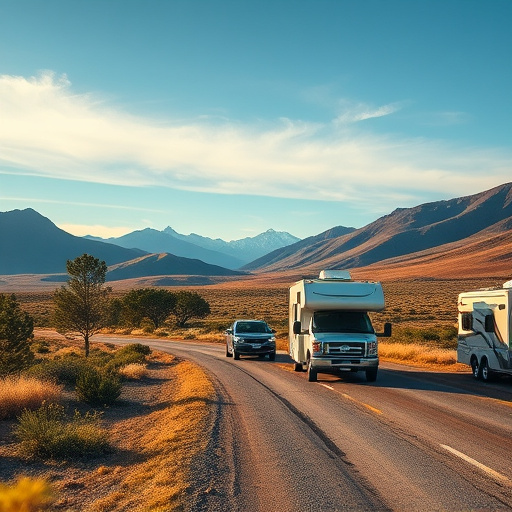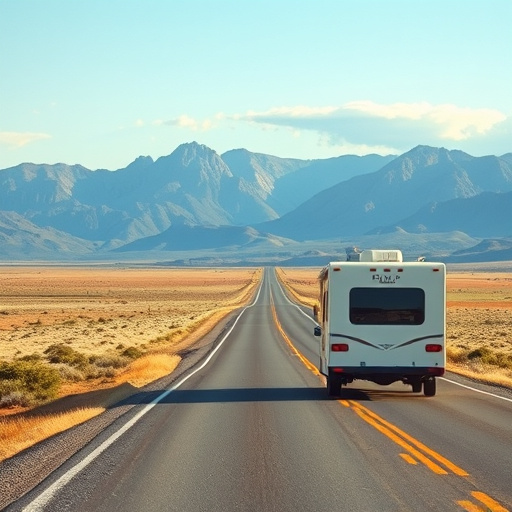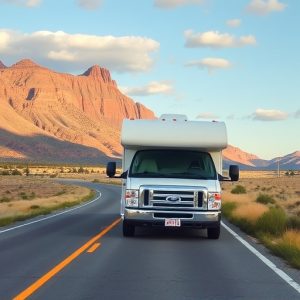For RVing beginners, fire safety is paramount. A comprehensive kit including a fire extinguisher, smoke alarms, flashlights, first aid supplies, and essential documents is crucial for emergency preparedness. Regularly test and update the kit, familiarize yourself with your RV's safety features, and develop an evacuation plan to mitigate risks and ensure a safe, enjoyable journey according to tips from experienced RV owners.
Fire safety kits are an essential component of any RVing adventure, providing crucial protection against potential blazes. For RVing beginners, understanding and equipping with the right kit can be life-saving. This article guides you through everything from identifying essential components to incorporating fire safety measures into your routine. Learn how to navigate this vital aspect of RV living, ensuring a safer and more enjoyable experience on the open road for those new to the world of RVing.
- Understanding Fire Safety Kits for RVs
- Essential Components of a Comprehensive RV Fire Safety Kit
- Tips for Incorporating Fire Safety Measures into Your RVing Routine for Beginners
Understanding Fire Safety Kits for RVs

Fire safety kits are essential components of any RV, especially for RVing for beginners who may not be as familiar with emergency preparedness. These kits are designed to provide quick access to critical tools and supplies in the event of a fire, allowing campers to respond swiftly and effectively. A well-equipped RV fire safety kit includes a range of items such as fire extinguishers, smoke alarms, flashlights, and first aid materials.
For RVing for beginners, understanding the contents and proper placement of these kits is crucial. Fire extinguishers should be easily accessible and regularly maintained to ensure their functionality. Smoke alarms play a vital role in providing early warning signs, while flashlights with extra batteries help illuminate areas during emergencies. Additionally, first aid materials are important for treating minor injuries until professional medical help arrives. RV owners should familiarize themselves with the location of these kits, test their functionality periodically, and replace expired items to ensure optimal protection during their travels.
Essential Components of a Comprehensive RV Fire Safety Kit

When it comes to RVing for beginners, fire safety kits are an often-overlooked but indispensable component of emergency preparedness. A comprehensive RV fire safety kit should include a variety of essential components designed to protect both people and property in case of a fire. At a minimum, this kit should contain a fire extinguisher that is easily accessible and suitable for the type of cooking or heating equipment in your recreational vehicle. Additionally, you’ll need a first aid kit with bandages, antiseptics, and pain relievers to handle minor injuries that may occur during an evacuation.
Communication devices such as a portable radio with extra batteries are crucial for staying informed and coordinating efforts with other RV owners or emergency services. Flashlights and candles with matches provide light and heat in the event of a power failure or early morning emergences. Never forget to include important documents like insurance policies, identification cards, and contact information for emergency services in a water-resistant container. Lastly, consider adding personal items like medications, eye glasses, and a change of clothes to ensure you have everything needed for safety and comfort during an unexpected evacuation.
Tips for Incorporating Fire Safety Measures into Your RVing Routine for Beginners

When embarking on your first RVing adventure, ensuring fire safety might seem like an added chore, but it’s a crucial aspect of responsible RVing for beginners. Start by familiarizing yourself with the fire safety equipment provided in your RV and learn how to use each item properly. Regularly inspect these devices, ensuring they are fully charged, functional, and within their expiration dates. Simple habits such as keeping flammable materials away from heat sources, regularly cleaning vents, and being mindful of open flames or hot surfaces can significantly reduce the risk of a fire.
Additionally, create an emergency plan that includes evacuation routes and meeting points. Practice this plan with your family or fellow travelers to ensure everyone understands their role in case of an emergency. Keep a well-stocked RV fire safety kit accessible and well-ventilated, including items like fire extinguishers, smoke alarms, flashlights, and first aid supplies. Regularly review fire safety tips from experienced RV owners and stay informed about local regulations to make your RVing journey safer and more enjoyable.
For RVing enthusiasts, especially those new to the road, fire safety kits are an indispensable addition to any trip. By equipping yourself with a comprehensive kit that includes essential components like fire extinguishers, smoke detectors, and emergency lighting, you’re taking a significant step towards ensuring your safety and peace of mind while exploring the open road. Incorporating these measures into your RVing routine can prevent potential disasters and turn a stressful situation into one where you’re prepared to handle any emergencies that may arise. So, whether you’re a seasoned RVer or just starting out, investing in fire safety isn’t just a good practice—it’s a necessary one.
